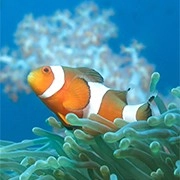Sea Lion Life
Have we ever watched sea lions lounging on a sunny shore and wondered what their daily life looks like? Sea lions are marine mammals from the Otariidae family and belong to the Otariinae subfamily.
There are several genera, including the Northern Sea Lion, South American Sea Lion, Australian Sea Lion, New Zealand Sea Lion, and the Californian Sea Lion. These animals are known for their agility in water, social nature, and playful behavior.
Distinctive Features
Sea lions are easy to recognize thanks to their small external ears and streamlined, spindle-shaped bodies. Their front and back limbs are flipper-like, with the back flippers able to rotate forward so they can “walk” on land. Their coarse fur protects them from cold water. Males can reach 2.5–3.25 meters, depending on the species, while females are smaller. Some males even have long manes around their necks, like lions, giving the species its name.
Many people confuse sea lions, seals, and walruses. Here’s a simple trick: sea lions have visible ears, seals do not, and walruses are huge with long tusks. Northern Sea Lions are the largest, with males reaching over 3 meters long and weighing more than 1,000 kg. Females are smaller, with lighter fur and no mane.
Appearance Details
Sea lions have short, broad faces with blunt snouts, small eyes, and visible ears. Their front flippers are long and strong, while back flippers have webbing and claws on the middle toes. South American Sea Lions are mostly gray, sometimes silvery, with pale yellow bellies. The color of younger individuals or females can vary, making them quite striking to watch.
Body Structure and Movement
The spindle-shaped body and flippers make sea lions excellent swimmers. Their teeth resemble land carnivores but are less specialized. On land, they move surprisingly well, using their rotating back flippers to support their weight. Males are roughly twice the size of females, showing a clear difference in size between genders.
Habitat and Social Life
Sea lions live along the northeastern Pacific coasts, including Canada, the United States, and Mexico. They eat fish, squid, clams, and sometimes krill. Social animals by nature, sea lions communicate with each other in many ways. On land, they can gather in groups of thousands, while at sea, we often see smaller groups of a few individuals.
During the day, they swim, hunt, and dive using their long front flippers. They sometimes haul out to sunbathe and rest at night. Except for the breeding season, they don’t have fixed homes. Males travel far for food, spending 2–3 weeks at sea, while females and young ones stay near the shore more often.
Behavior and Temperament
Sea lions are generally gentle and shy, but they can be territorial during breeding season. Males become especially active, defending space and competing for mating opportunities. Observing them during this time shows just how clever and strong these animals can be.
Diet and Feeding Habits
Sea lions enjoy fish, squid, clams, jellyfish, and krill. Sometimes, when food is scarce, they may even eat penguins. They usually swallow food whole, which allows them to consume large amounts needed to fuel their energy-intensive swimming. Occasionally, they swallow small stones to aid digestion.
Science Helpers
Scientists have discovered a fascinating way to use sea lions in research. By attaching electronic trackers to these animals, researchers can monitor their swimming speed and range. This helps estimate the location and movement of krill schools, showing that sea lions can be surprising partners in understanding marine life.
Sea Lion Secrets
Lykkers, sea lions are full of surprises! They’re playful, smart, and wonderfully social. Watching them move on land, dive into the water, and interact with each other lets us see their hidden world up close. Next time we spot these charming creatures on the shore, we’ll know they’re busy exploring, hunting, and having fun under the sun and waves!
Sea Lions Are Masters of Fishing | South Pacific | BBC Earth
Video by BBC Earth

 · Animal Team
· Animal Team